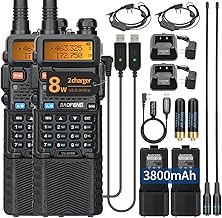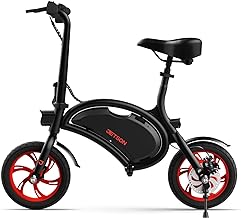5 important factors worth considering when looking for the best antenna
Selecting the best antenna is an important choice that can greatly affect how you watch TV and communicate. With so many options out there, it’s important to focus on key factors to make sure the antenna works well for you. This includes knowing the kind of signal you want, how far away it can pick up signals, and what you need to do to install it. By learning about antenna technology and how it works best for you, you can improve your TV watching and communication experience.
See our guide to the best antenna.
Type of antenna (e.g. indoor, outdoor, omnidirectional, directional)
Choosing the right antenna is important to improve your TV signal. Indoor antennas are small and good for city living near broadcast towers. Outdoor antennas are better for rural areas or places with signal blockages. Omnidirectional antennas get signals from all directions, while directional antennas focus on one direction for better reception from a specific tower. Consider where you live and how strong your signal is when picking an antenna. Indoor antennas are easy to install but may not work well far from broadcast towers. Outdoor antennas are harder to set up but give clear signals even in remote places. If you want coverage from all directions, choose an omnidirectional antenna. For specific channels or towers, a directional antenna works best. Understanding each antenna type will help you make the right choice for better TV reception no matter where you live.
Frequency range and compatibility
When you buy an antenna, it’s important to think about the frequency range and if it will work with your location. The frequency range determines what kind of signals the antenna can pick up, affecting how good your TV shows will look. You need to choose an antenna that can pick up a lot of different frequencies so you can watch many channels without any issues. It’s also important to make sure the antenna works well with the broadcasting towers near you to get a strong signal. Getting an antenna that matches the frequency range of local stations will make your picture clearer and your entertainment better.
Not paying attention to frequency range and compatibility can cause problems with your TV signal and make your reception bad. By figuring out where you live and checking the frequencies used by nearby stations, you can pick an antenna that meets your needs. Choosing an antenna that can adjust frequencies or work with both UHF and VHF signals can really improve your reception and give you access to more channels with better quality. Making frequency range and compatibility a priority when picking out an antenna will make your TV-watching experience more enjoyable and smooth.
Gain (measured in decibels)
When buying an antenna, the gain in decibels is really important to think about. A higher gain usually means better signal reception and performance, which is great for improving your viewing experience. It might seem like a good idea to get the antenna with the highest gain possible, but it’s better to find a balance that fits your specific needs and location. If you have a high gain antenna in an area with good signal coverage, it could cause signal overload and make things worse. On the other hand, a low gain antenna in an area with weak signal strength can lead to bad performance and lots of interruptions. It’s key to find the right balance that works for your viewing habits and where you live to get the most out of your antenna.
Also, remember that gain isn’t the only thing that affects how well your antenna works. Signal quality, interference, and where you put your antenna all play big roles in how well it performs. While gain is important, it’s just one piece of the puzzle for making your antenna setup work well. The real trick is finding a balance and making smart choices. By understanding how gain works with other factors, you can choose the right antenna for you, giving you a smooth and enjoyable viewing experience that meets your expectations and goes beyond.
Size and mounting options
When choosing the size and placement of your antenna, it’s important to focus on how well it works and how easy it is to use, rather than just how it looks. A larger antenna might give you a better signal and reach further, especially in areas where the signal is weak. Where you mount your antenna also affects how well it works. While indoor antennas may be less noticeable, outdoor ones usually provide better signal quality and coverage. Your choice of antenna size and mounting should match your needs and consider how your location might affect signal reception.
Choosing a small antenna with different mounting options can give you a good balance of performance and convenience. Where you place the antenna can make a big difference in how strong the signal is. Whether you choose to mount it on a wall, pole, or in the attic, make sure it’s in a spot with as few obstacles and as little interference as possible. By prioritizing how well the antenna works over how it looks, you can count on getting a steady signal without sacrificing performance. In the end, thinking carefully about the trade-offs between size, mounting options, and signal reception needs is important when deciding which antenna to buy.
Durability and weather resistance
When looking to buy an antenna, it’s important to consider how well it can withstand different weather conditions. This is especially crucial for antennas used outdoors, where they will be exposed to the elements. A durable antenna that can handle rain, snow, and strong winds will ensure you get a strong signal and save you the trouble and expense of needing frequent repairs or replacements. Investing in a sturdy antenna that can stand up to different weather conditions is a smart choice that will pay off by giving you reliable performance and satisfaction in the long run.
With so many antennas on the market, choosing one that is durable and weather-resistant can make a big difference. By choosing an antenna made with high-quality materials and a strong design, you can be confident that it will last a long time and provide good performance no matter the weather. Whether you live in an area with heavy rain or extreme temperatures, having an antenna that can handle the elements will give you peace of mind and a smooth TV-watching experience. When it comes to antennas, durability and weather resistance are not just nice-to-haves, but essential features that make a product high-quality and dependable.
Conclusion
Simply put, the antenna is a symbol of innovation that helps us communicate and connect with each other in today’s world. Its development reflects our desire to keep improving and meeting our ever-changing needs. More than just a piece of technology, the antenna represents our wish to reach out, make connections, and explore new opportunities. Looking ahead, the antenna continues to lead us toward a more connected world full of endless possibilities. Want more info on eetoys dog chew toy indestructible dog toys, check the best eetoys dog chew toy indestructible dog toys.


